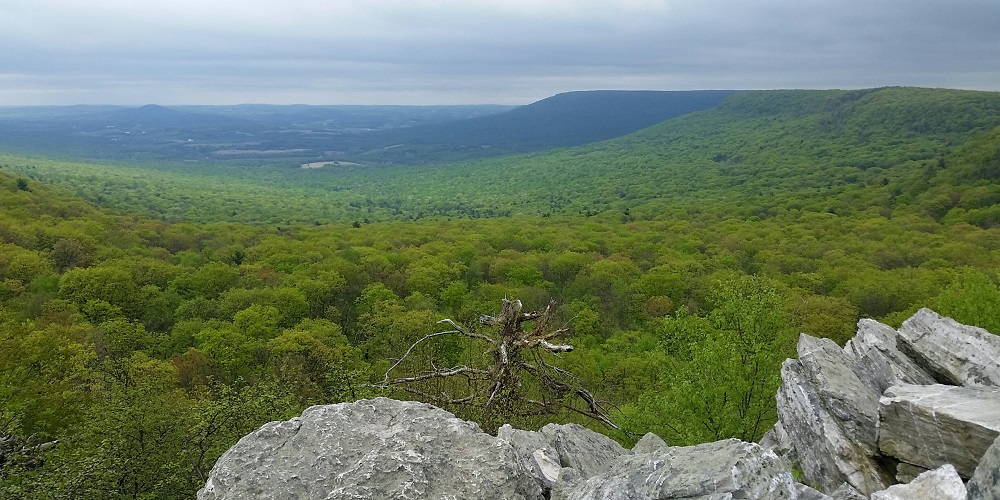
Kempton, PA—Hawk Mountain Sanctuary and The Nature Conservancy announced that they will protect over 2,400 acres of Sanctuary forestland for generations to come.
“Hawk Mountain sits on the Kittatinny Ridge, a globally-significant migration super highway. Our goal is to protect this international flyway and to guarantee that our refuge for raptors—and the people who enjoy it—stays forever wild,” says Hawk Mountain President Sean Grace.
Over the course of three years, the two conservation leaders implemented a creative approach to conserve the Sanctuary, including placing the majority of its landholdings in a perpetual conservation easement.
“Hawk Mountain has always considered this approach, and The Nature Conservancy presented us a tremendous opportunity through its Working Woodlands program,” Grace explains.
An attractive feature was the chance to collaborate on a broad-based forest management plan that emphasizes the best and highest ecological forest functions, and brings to the Sanctuary forest expertise that it otherwise would not have.
Bill Kunze, the Executive Director for The Nature Conservancy in Pennsylvania, calls the partnership a win-win for conservation. “Our work to preserve the Kittatinny Ridge is easier when Hawk Mountain leads by example,” he says.
“Not only does Hawk Mountain benefit, but so do other organizations. We’ve already co-hosted with Hawk Mountain a two-day workshop that connected the best minds in key forest management issues, such as deer over-browsing and invasive plant management,” Kunze adds.
The project works thanks to a carbon inventory and the sale of carbon credits. This, in turn, helps to fund the conservation easement and provide the ongoing input from experts in the field.
According to Kunze, eligible landowners like Hawk Mountain earn revenue through carbon credits, and as forest management practices improve, income may increase over time.
“The net result is better-managed forest, more carbon sequestered, and greater incentive to protect land over the long-term,” says Kunze.
The ultimate goal is to serve as a leader in land conservation, and a model for other organizations and private landowners.
“Hawk Mountain and The Nature Conservancy has done a tremendous job today in this project to not only protect land, but also to still allow recreation and nature tourism,” says Sara Nicholas, PA Department of Conservation and Natural Resources Policy Director.
“It’s amazing what two organizations can accomplish when they partner at the highest level,” says Grace. “Hawk Mountain and The Nature Conservancy benefit, and so does wildlife.”
Follow Hawk Mountain Sanctuary or The Nature Conservancy in Pennsylvania to remain up-to-date on this partnership to ensure these forestlands stay in a natural state forever. To learn more about either organization, visit www.hawkmountain.org or www.nature.org.
